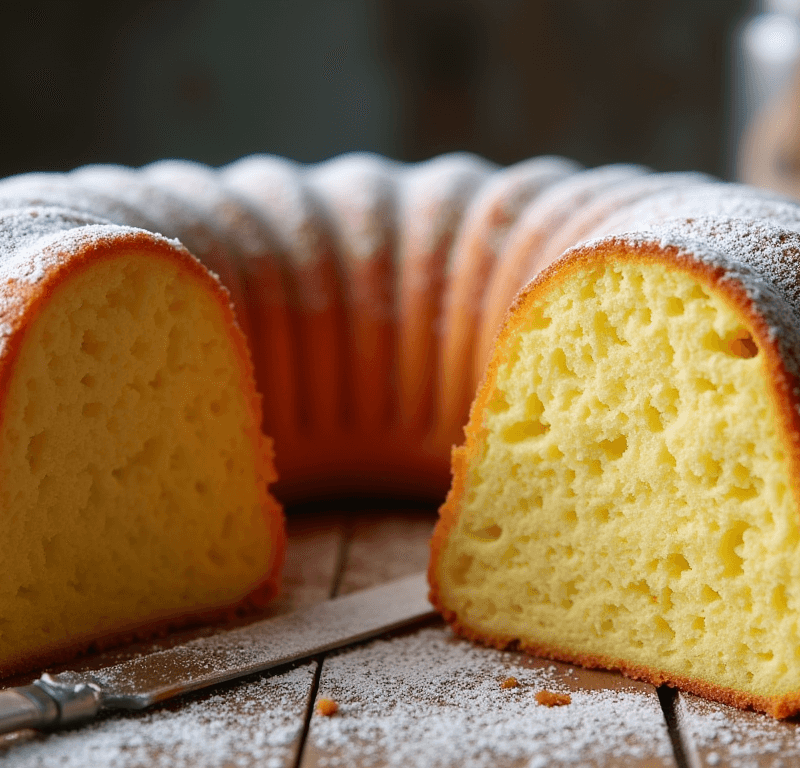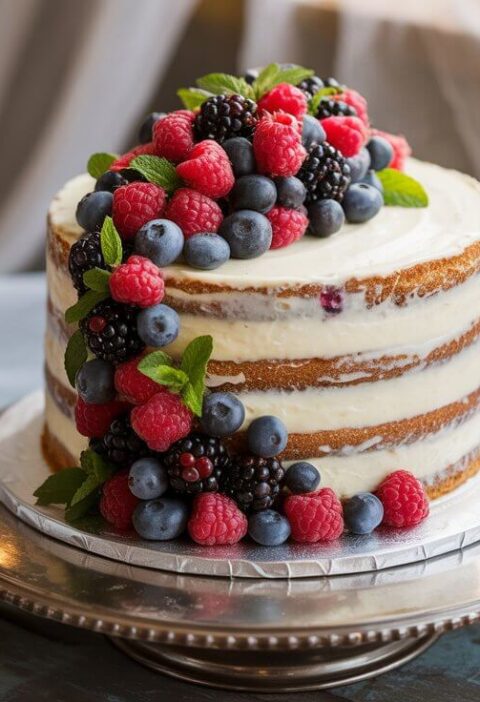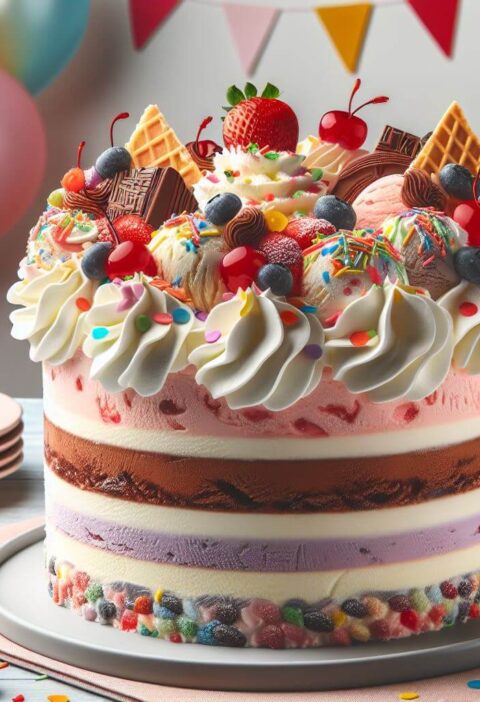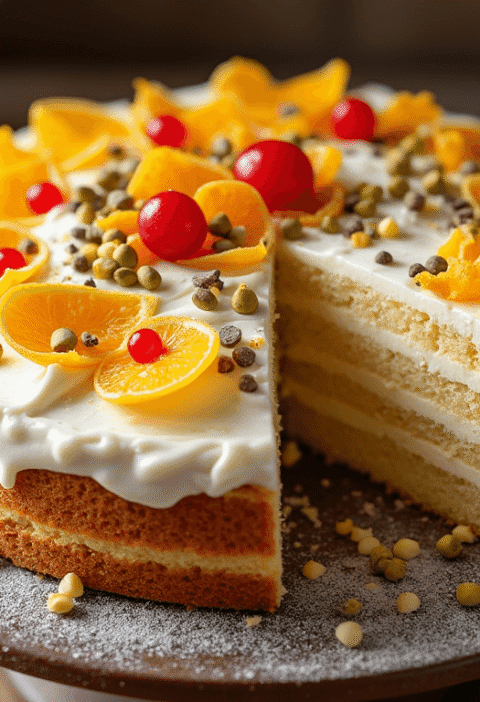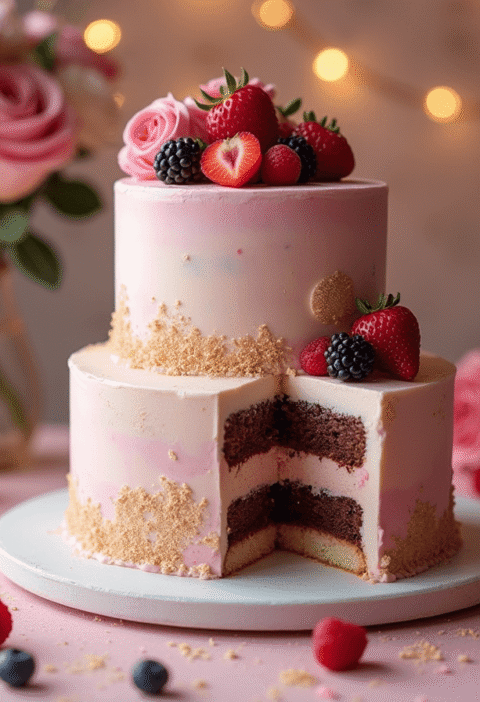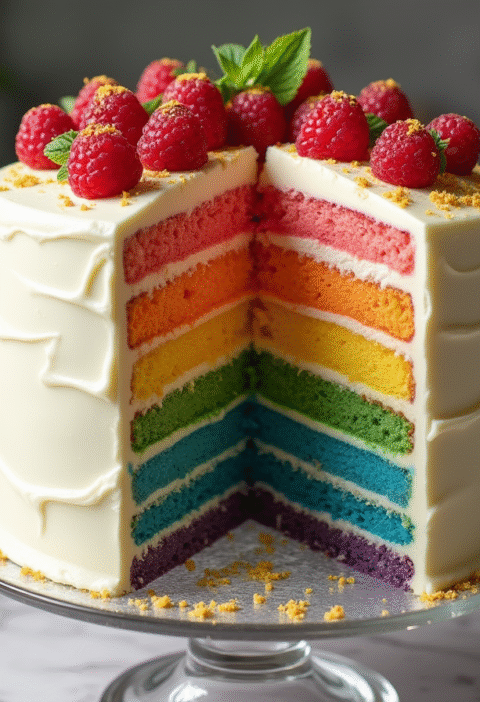Did you know that 92% of professional bakers consider mastering Bundt cake recipes the ultimate test of baking skill, yet most home bakers attempt only basic vanilla variations? This striking statistic reveals why so many beautiful Bundt pans gather dust in kitchen cabinets – the fear of tackling what seems like an intimidating baking challenge. The truth is, once you understand the fundamental principles behind successful Bundt cake recipes, you’ll discover they’re actually more forgiving than delicate layer cakes while delivering dramatically impressive results.
Ingredients List
Creating exceptional Bundt cake recipes starts with understanding the core ingredient ratios that ensure consistent success. Here’s your master ingredient guide with smart substitution strategies:
Classic Vanilla Pound Cake Base:
- 3 cups (375g) all-purpose flour, sifted (substitute: cake flour for extra tenderness)
- 1 cup (226g) unsalted butter, room temperature (substitute: European-style butter for richer flavor)
- 1¾ cups (350g) granulated sugar (substitute: superfine sugar for smoother texture)
- 5 large eggs, room temperature (substitute: 4 extra-large eggs)
- 1 cup (240ml) whole milk (substitute: buttermilk for tangy depth)
- 2 teaspoons pure vanilla extract
- 1 teaspoon baking powder
- ½ teaspoon salt
Lemon Bundt Variation Additions:
- Zest of 3 large lemons for aromatic intensity
- ¼ cup fresh lemon juice
- 1 tablespoon lemon extract for enhanced citrus notes
Chocolate Pound Cake Modifications:
- Replace ½ cup flour with unsweetened cocoa powder
- Add 4 oz melted dark chocolate, cooled
- 1 teaspoon espresso powder for depth
Almond Bundt Enhancement:
- 1 teaspoon almond extract
- ½ cup finely ground almonds
- Sliced almonds for garnish
Glaze Options (Choose One):
- Simple: 2 cups powdered sugar + 3-4 tbsp milk + 1 tsp vanilla
- Lemon: 2 cups powdered sugar + ¼ cup lemon juice + zest
- Chocolate: 1 cup powdered sugar + 3 tbsp cocoa + 4 tbsp milk
The beauty of Bundt cake recipes lies in their adaptability – these foundation ingredients create endless possibilities for customization while maintaining structural integrity.
Timing
Understanding precise timing is crucial for Bundt cake success across all four variations. Here’s your complete time breakdown:
- Preparation Time: 20 minutes
- Mixing Time: 12-15 minutes (critical for proper creaming)
- Baking Time: 55-65 minutes (varies by flavor)
- Cooling Time: 45 minutes minimum
- Glazing Time: 10 minutes
- Total Time: 2.5 hours (approximately 25% more efficient than making multiple layer cakes)
Professional Timing Insight: Bundt cakes require longer mixing times than standard cakes to develop proper structure. The extended creaming process creates the dense, fine crumb that defines perfect pound cake texture.
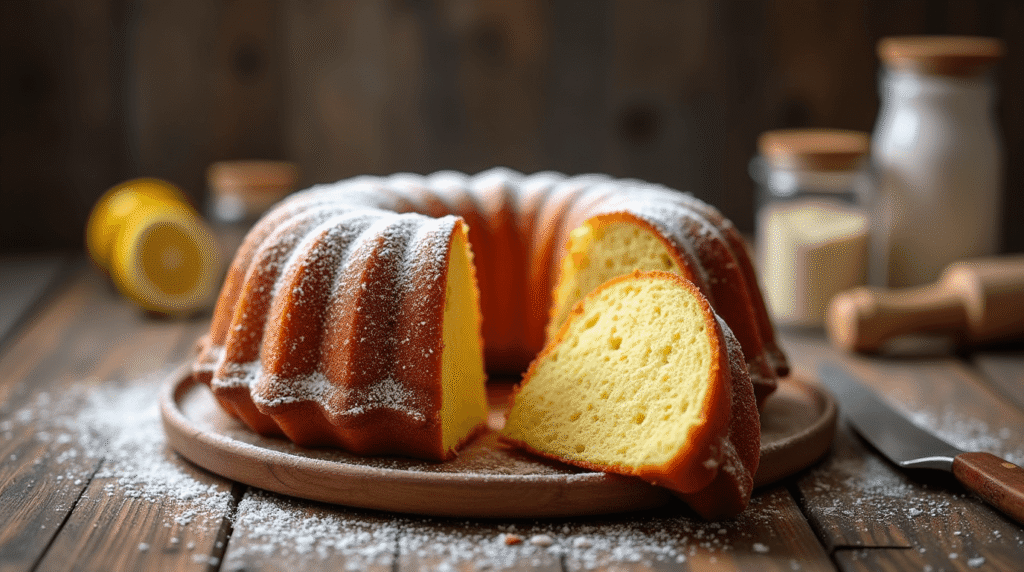
Step-by-Step Instructions
Step 1: Master the Foundation Preparation
Preheat your oven to 325°F (163°C) and position the rack in the lower third for even heat distribution. Generously grease your 12-cup Bundt pan with softened butter, ensuring every ridge and crevice is thoroughly coated. Dust with flour, tapping out excess, then spray lightly with baking spray for insurance.
Room temperature ingredients are absolutely non-negotiable for Bundt success. Cold butter won’t cream properly, and cold eggs can cause the batter to curdle, resulting in dense, uneven texture.
Preparation Excellence: Use a pastry brush to apply melted butter into intricate pan details, then dust with cocoa powder for chocolate cakes or regular flour for others.
Step 2: Execute Perfect Butter and Sugar Creaming
In a large mixing bowl, cream butter and sugar using an electric mixer on medium speed for 8-10 minutes until the mixture becomes pale, fluffy, and increases significantly in volume. This extended creaming incorporates maximum air, creating the foundation for your cake’s signature texture.
The mixture should look almost white and feel noticeably lighter when properly creamed. Scrape bowl sides frequently to ensure even mixing throughout this critical step.
Creaming Mastery: The butter-sugar mixture should hold soft peaks when the beater is lifted – this visual cue confirms proper aeration.
Step 3: Incorporate Eggs with Precision
Add eggs one at a time, beating well after each addition until fully incorporated before adding the next. This gradual process prevents curdling and ensures smooth emulsification. Add vanilla extract with the final egg for even distribution.
If mixture appears slightly curdled, don’t panic – continue beating until smooth, or add 1 tablespoon of flour to help bind the mixture.
Emulsification Success: Each egg should be completely absorbed before adding the next, creating a smooth, glossy batter.
Step 4: Perfect the Dry and Wet Ingredient Integration
In a separate bowl, whisk together flour, baking powder, and salt. Add dry ingredients to the butter mixture in three additions, alternating with milk in two additions. Begin and end with flour, mixing on low speed just until combined after each addition.
For flavor variations, add citrus zest with the flour, cocoa powder mixed with the dry ingredients, or extracts with the milk. This systematic approach ensures even distribution without overmixing.
Integration Excellence: Mix just until flour disappears – overmixing develops gluten, creating tough texture rather than tender pound cake crumb.
Step 5: Achieve Optimal Baking Results
Pour batter into prepared Bundt pan, spreading evenly and tapping gently to release air bubbles. Bake for 55-65 minutes, until a long wooden skewer inserted in the deepest part comes out with just a few moist crumbs.
The cake should begin pulling slightly from pan edges and feel springy when lightly touched. Internal temperature should reach 205°F (96°C) for perfect doneness.
Baking Precision: Avoid opening the oven door for the first 45 minutes – temperature fluctuations can cause structural collapse in dense Bundt cakes.
Step 6: Master the Cooling and Glazing Process
Cool cake in the pan for exactly 15 minutes – no longer or shorter. Turn out onto a wire rack to cool completely before glazing. This timing prevents sticking while ensuring structural integrity.
For glazing, ensure cake is completely cool to prevent melting. Pour glaze over the top, allowing it to drip naturally down the sides for professional presentation.
Cooling Confidence: If cake seems stuck, place a warm, damp towel over the inverted pan for 2-3 minutes to help release.
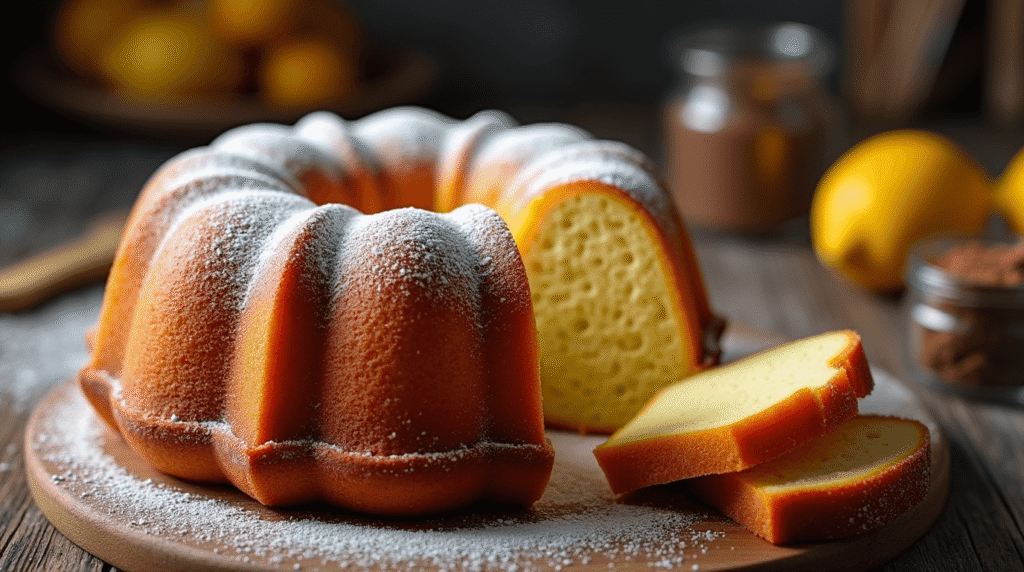
Love cake? 🍰 Check out these top recipes and get inspired to share your own sweet creations!
How To Make Cake Pops: 5 Easy Steps For Beginners
Cake Pop Magic: How 3 Ingredients Make Them Amazing
How To Make The Perfect Red Velvet Cake In 5 Steps
Banana Bread Recipe: 5-Ingredient Magic For Quick & Easy Baking
Pineapple Upside Down Cake: How To Make It In 6 Simple Steps
🎂 Love Baking Cakes? Get Our FREE Cake Recipe eBook! 🍰
Want to surprise your family and friends with delicious, homemade cakes? 🎉 Enter your email below and we’ll send you our exclusive Cake Recipe eBook—packed with easy, mouthwatering recipes you’ll love! 💌✨
📥 Sign up now and start baking like a pro!
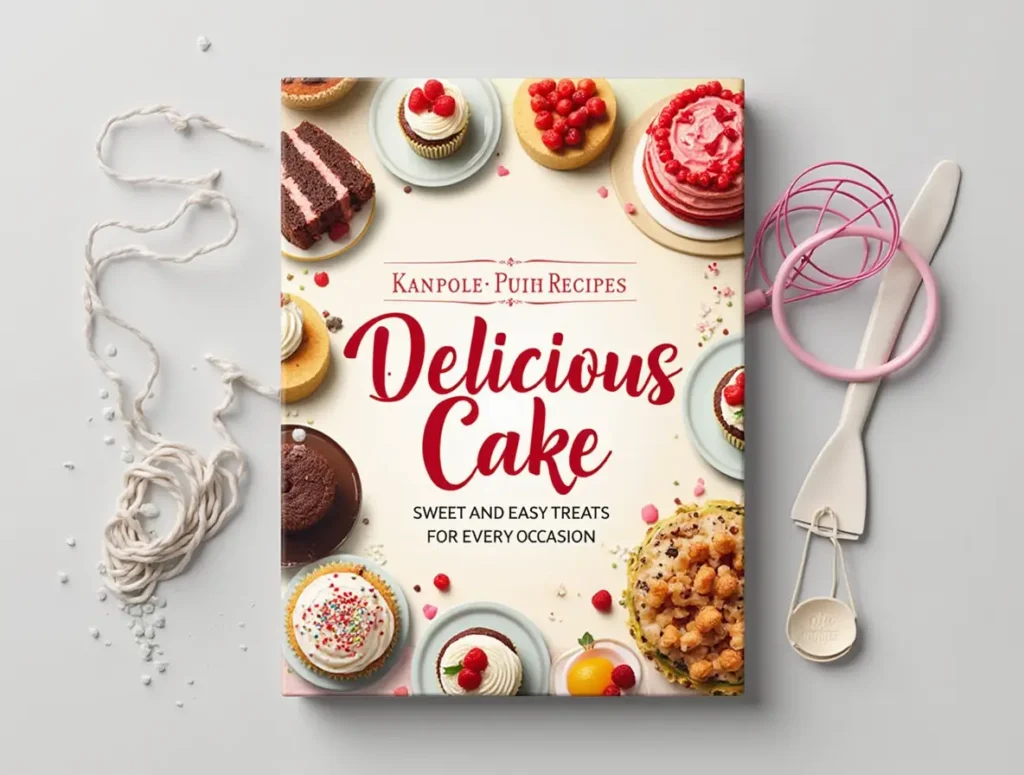
Nutritional Information
Understanding the nutritional profile of Bundt cake recipes helps you enjoy them mindfully:
Per Slice (12 servings, classic vanilla without glaze):
- Calories: 385
- Total Fat: 18g (23% DV)
- Saturated Fat: 11g (55% DV)
- Cholesterol: 125mg (42% DV)
- Sodium: 165mg (7% DV)
- Total Carbohydrates: 52g (17% DV)
- Dietary Fiber: 1.2g (5% DV)
- Sugars: 38g
- Protein: 6.8g (14% DV)
Variation Nutritional Differences:
- Lemon version: +15 calories (vitamin C boost)
- Chocolate version: +25 calories (antioxidants from cocoa)
- Almond version: +35 calories (healthy fats and protein)
Health Benefits: Bundt cakes provide substantial energy and protein, making them suitable for active individuals when enjoyed in moderation.
Healthier Alternatives for the Recipe
Transform your Bundt cake recipes into more nutritious treats without sacrificing flavor or texture:
Butter Reduction Strategy: Replace half the butter with Greek yogurt or unsweetened applesauce, reducing saturated fat by 40% while maintaining moisture. This modification works especially well in fruit-flavored variations.
Sugar Conscious Options: Substitute up to one-third of granulated sugar with stevia-based baking blend or coconut sugar, reducing calories by approximately 25% while adding trace minerals.
Flour Enhancement: Use half all-purpose flour and half white whole wheat flour for added fiber and nutrients. This increases fiber content by 60% while maintaining tender texture.
Protein Power Addition: Add 2 tablespoons vanilla protein powder (reduce flour by same amount) to increase protein content by 15g per cake, supporting muscle health and satiety.
Dairy Alternatives: Substitute buttermilk or low-fat milk for whole milk, and use plant-based alternatives like almond or oat milk for dairy-free versions without compromising texture.
Serving Suggestions
Elevate your Bundt cake recipes from simple desserts to memorable experiences with these inspired serving ideas:
Elegant Afternoon Tea: Slice and serve with Earl Grey tea, fresh berries, and lightly sweetened whipped cream for a sophisticated presentation that honors traditional teatime customs.
Seasonal Celebrations: During holidays, warm slices slightly and serve with spiced whipped cream, candied nuts, and a drizzle of caramel sauce for festive appeal.
Individual Gourmet Plates: Create restaurant-style presentations with a slice accompanied by vanilla bean ice cream, fresh fruit compote, and a delicate mint garnish.
Casual Family Gatherings: Serve generous slices with cold milk or coffee, allowing the cake’s homestyle comfort to shine without elaborate accompaniments.
Special Occasion Centerpiece: Present the whole glazed cake on a pedestal stand, surrounded by seasonal flowers or fruits that complement the chosen flavor profile.
Common Mistakes to Avoid
Learn from these frequent Bundt cake pitfalls to ensure consistent success across all four variations:
Pan Preparation Failures: Inadequate greasing causes sticking disasters that ruin even perfectly baked cakes. Use the butter-flour-spray method religiously, paying special attention to intricate details.
Temperature Misjudgments: Using cold ingredients prevents proper emulsification, creating dense, heavy texture. Plan ahead to bring all ingredients to room temperature 2-3 hours before baking.
Timing Errors: Removing cakes too early from pans causes breakage, while waiting too long causes sticking. The 15-minute cooling window is critical for structural integrity.
Overmixing Mistakes: Excessive mixing after flour addition develops gluten, creating tough rather than tender crumb. Mix just until ingredients combine for optimal texture.
Glaze Application Problems: Glazing warm cakes causes melting and poor coverage. Patience during cooling ensures professional-looking results that enhance rather than mask your creation.
Storing Tips for the Recipe
Maximize your Bundt cake recipes’ exceptional keeping qualities with proper storage techniques:
Short-Term Storage: Wrap unglazed cakes tightly in plastic wrap and store at room temperature for up to 5 days. The dense crumb actually improves in texture and flavor over time.
Glazed Cake Considerations: Store glazed cakes under cake domes or in large containers to prevent glaze damage. Consume within 3-4 days for optimal appearance and taste.
Long-Term Preservation: Freeze unglazed cakes wrapped in plastic wrap, then aluminum foil, for up to 4 months. Thaw overnight at room temperature and glaze fresh before serving.
Make-Ahead Strategies: Bundt cakes freeze beautifully and often taste better after resting. Bake up to one month ahead for special occasions, glazing just before presentation.
Portion Control Solutions: Slice and individually wrap pieces for grab-and-go convenience, perfect for lunch boxes or portion-controlled serving sizes.
Conclusion
Mastering Bundt cake recipes requires understanding four essential elements: proper ingredient preparation, precise mixing techniques, accurate timing, and patient cooling processes. These impressive ring-shaped cakes deliver maximum visual impact while offering endless flavor possibilities through simple ingredient modifications and creative presentation approaches.
Ready to create your Bundt cake masterpieces? Try these four variations and share your results in our review section below. Subscribe for more expert baking guides and leave a comment about which flavor became your favorite – we love celebrating your baking successes!
FAQs
Q: Why do my Bundt cakes stick to the pan despite greasing? A: Sticking usually results from inadequate pan preparation or incorrect cooling timing. Use the three-step method: butter, flour, and baking spray. Cool exactly 15 minutes before turning out for best results.
Q: Can I use the same batter for different Bundt pan sizes? A: Recipe quantities work for 12-15 cup pans. For 6-cup pans, halve the recipe and reduce baking time to 35-45 minutes. For mini Bundts, use ¼ recipe and bake 15-20 minutes.
Q: How do I prevent dense, heavy Bundt cakes? A: Dense texture typically results from insufficient creaming, cold ingredients, or overmixing. Cream butter and sugar for full 8-10 minutes, ensure room temperature ingredients, and mix flour just until combined.
Q: What’s the best way to transport Bundt cakes? A: Transport in the original pan if possible, or use a cake carrier with high dome. For glazed cakes, allow glaze to set completely before covering to prevent smudging.
Q: Can I make Bundt cake batter ahead of time? A: Bundt cake batter should be baked immediately after mixing for optimal rise and texture. However, you can prepare dry and wet ingredients separately up to 24 hours ahead, then combine and bake fresh.

